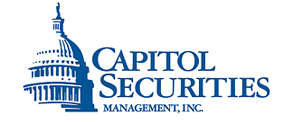By: Kent Engelke | Capitol Securities
Many times I have commented about the massive proliferation of passive investing and how it is impacting trading mechanics. According to the Index Industry Association, benchmarking giants like S&P Global Inc., MSCI Inc., and the London Stock Exchange Group PLC, have created 438,000 new indexes over the last 12 months through June 30.
According to the same group, there are more than 3.7 million benchmarks globally, dwarfing the roughly 50,000 stocks that trade on exchanges around the world.
The greatest annual growth in indexes are factor based and smart beta gauges that track stocks with characteristics like momentum or low volatility and often use these features rather than market capitalization to determine how much of these companies to include in a measure.
Fixed income indexes – concentrated primarily in sovereign debt – now make up about 16% of all indexes. Two years ago, 95% of indexes were focused in equities.
Indexes focused on environmental and social concerns jumped about 60% from about a year ago.
Wow! I readily acknowledge that I do not have any idea of the capitalization or structure of each of these indexes but the data is staggering. Talk about slicing and dicing. Depending upon the source, traditional stock research departments have declined from 50% to 75% since 2008, the direct result of this massive move to passive/indexing investing.
What I find interesting is that according to Society Generale, 90% of all stocks, of which only 10% of their ownership is concentrated in ETFs, are investment vehicles similar to that of indexes. Conversely, 10% of companies comprise 90% of ETF capitalization.
In my view, today’s trading mechanics have never been stress tested. How will the markets respond to a crisis?
As widely noted, the major indices are down about 10%-12% in relatively quick order. In my view, the declines would be greater if it were not for retail investors buying ETFs in the face of selling from institutions. What happens if the retail investor stops buying, an environment that may be developing today given the lack of a recovery from the recent rout?
Will the popular indices decline another 15% to 20% which could perhaps cause a massive obliteration of indexes? Will a major sponsor experience financial issues, issues that would create the next financial crisis?
Historically, whenever there is a massive proliferation of an investment vehicle, the first time these vehicles are stress tested it typically ends poorly. Will today be different?
Commenting upon yesterday’s market activity, AAPL dragged the averages lower and is another FAANG company that is now in “bear market territory,” defined as declining over 20% from its highs. Shares peaked about a month ago. Facebook is down over 35% from their July peak and Amazon is off 22% since early September. Netflix has dropped about 33% since last June. Google is the best performer, off about 18.5% from July’s apex.
In my view, the decline of these mega-sized companies has been orderly with many not yet recognizing or accepting the magnitude of these drops, believing a recovery will imminently occur. As noted earlier, this perspective may now be changing.
What will happen today?
Last night the foreign markets were mixed. London was up 0.15%, Paris was down 0.22% and Frankfurt was up 0.08%. China was up 1.36%, Japan was down 0.20% and Hang Sang was up 1.75%.
The Dow should open moderately higher on potential trade optimism and Wal-Mart’s earnings that some stores beat. Oil is nominally higher. Goldman is suggesting crude will rebound to $75 barrel by the first quarter if OPEC reduces production by the amount it has telegraphed to the market. The 10 year is up 5/32 to yield 3.11%.

















